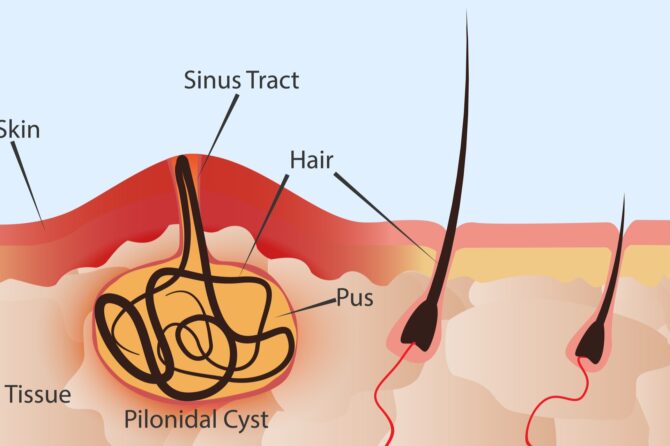
What are the Ways to Prevent Pilonidal Sinus?
Pilonidal sinus, often observed in the coccyx and posterior thigh region, is a condition formed by the embedding of hairs under the skin. This ailment can cause pain, swelling, and sometimes inflamed cysts. Prevention of pilonidal sinus, especially for individuals at risk, is important. Key preventive methods include keeping the area clean and dry. Taking regular baths and gently drying the area after sweating can reduce the risk of inflammation. Additionally, limiting time spent sitting, especially on hard surfaces, can decrease the pressure applied to the area and reduce the risk of pilonidal sinus.
Personal hygiene and skin care are important in reducing the risk of pilonidal sinus. Regular cleaning of excessive hair in the coccyx area can prevent hair embedding. However, it’s important not to overdo hair cleaning and avoid methods that may irritate the skin. Ensuring that the tools used for hair cleaning are sterile and adhering to personal hygiene rules can reduce the risk of infection. Avoiding tight clothing and opting for garments made from non-irritating fabrics like cotton can also help prevent pilonidal sinus.
What Helps with Pilonidal Sinus?
Some home treatments can help alleviate the symptoms of pilonidal sinus. In mild cases, applying hot compresses can reduce inflammation and relieve pain. Hot compresses can be applied several times a day for 10-20 minutes. This can facilitate the drainage of the cyst and provide relief. Additionally, pain relievers can be used to cope with pain and discomfort. However, while these treatments can temporarily relieve symptoms, they do not prevent the recurrence of the pilonidal sinus problem and may require medical intervention in some cases.
If an inflamed cyst has formed under the skin due to pilonidal sinus, your doctor may perform drainage or recommend further treatments. If pilonidal sinus becomes a recurring problem, surgical intervention may be necessary. Surgical methods include the removal of the cyst and affected tissue. Following surgery, it’s important to follow your doctor’s wound care instructions to prevent recurrence. Additionally, individuals prone to pilonidal sinus should make prevention methods a part of their life, as this can be effective in reducing recurrences.
Can Pilonidal Sinus Be Prevented?
Pilonidal sinus is largely preventable with appropriate measures. Basic prevention strategies include regional cleanliness and dryness, pressure reduction, and personal hygiene practices. Being aware of and minimizing risk factors is an important step in preventing the formation of pilonidal sinus. Regular skin care routines, proper cleaning of hairs, and avoiding excessive pressure can assist in preventing this ailment.
However, despite all precautions, some individuals may still be at a higher risk of developing pilonidal sinus. In such cases, early treatment is crucial to prevent the progression of the problem and reduce the risk of complications. If symptoms of pilonidal sinus are noticed, consulting a health professional to prevent the condition from advancing is important. With appropriate measures and treatments, pilonidal sinus can be managed, and the individual’s quality of life can be maintained or improved.
Leave a reply

Leave a reply